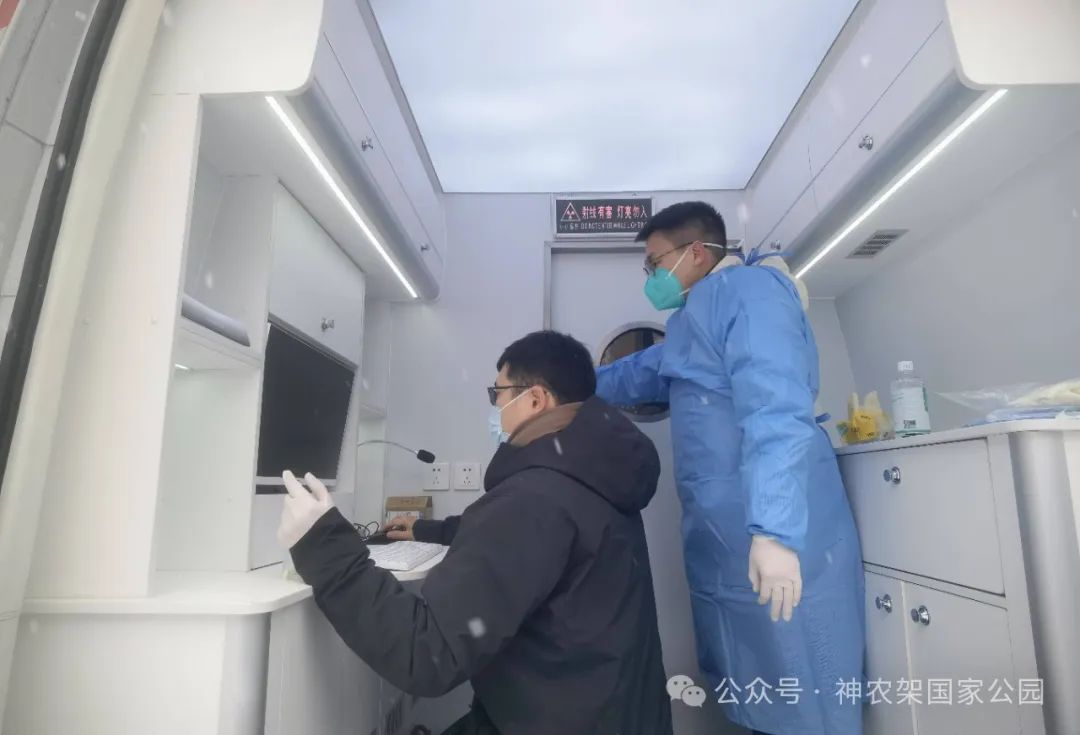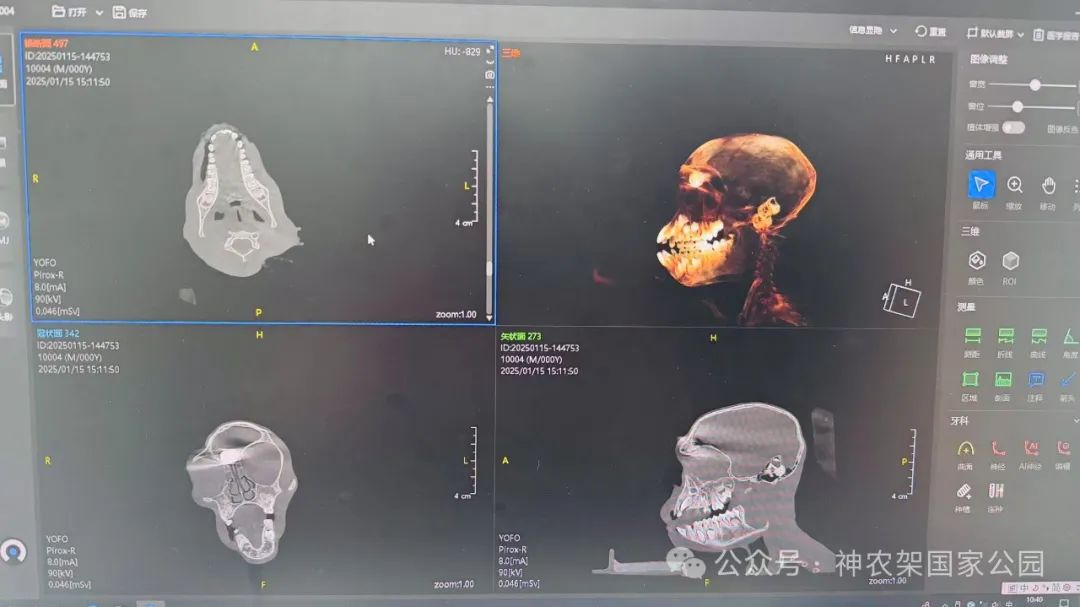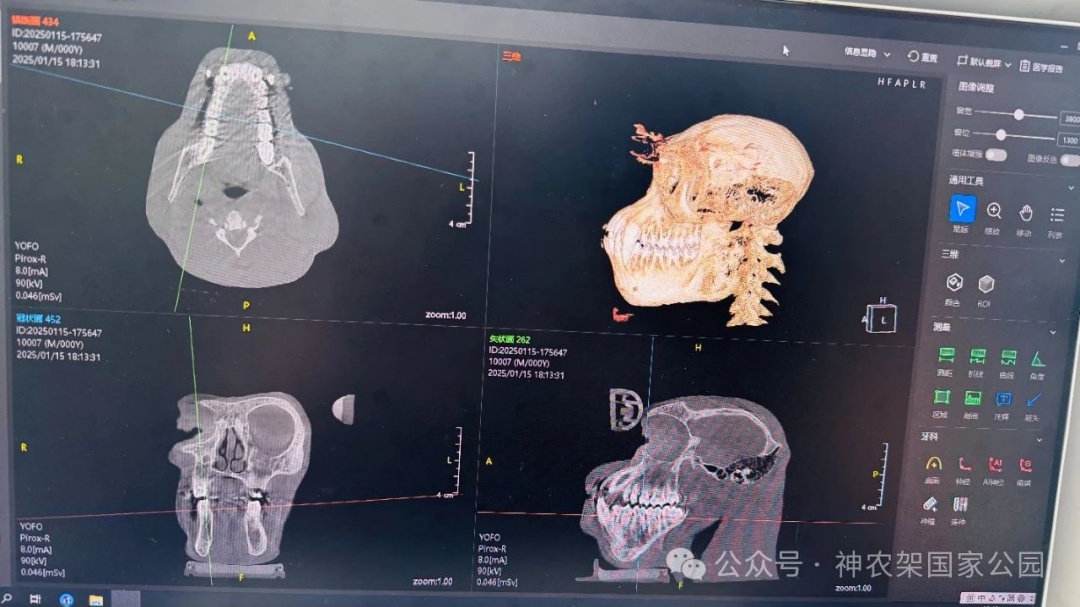First Park-University Collaboration on Research of Golden Snub-Nosed Monkey’s Stomatognathic System
Updated:2025-01-16 Source:Shennongjia National Park
From January 14 to 16, 2025, a team led by Professor Song Ke from the Department of Stomatology at Tongji Hospital affiliated to Tongji Medical College, Huazhong University of Science and Technology, and another led by Yang Jingyuan from the Scientific Research Institute of Shennongjia National Park braved harsh weather conditions to conduct groundbreaking research on the stomatognathic system of golden snub-nosed monkeys. The research was carried out at the Xiaolongtan Wildlife Rescue Center within Shennongjia National Park, using rescued individuals of the species.

The experimental examination included CBCT scans of the jawbones and teeth of golden snub-nosed monkeys at various developmental stages. The team also used a digital oral scanning system to record the monkeys' dental conditions in real time, studying tooth development, morphology, and diseases. Additionally, the research analyzed the types and quantities of oral microbiota present in the saliva and gingival sulcus fluid, offering insights at the genetic level into the factors influencing oral health and diseases. These studies are a pioneering effort in both domestic and international research on the golden snub-nosed monkey.

Song Ke introduced that the Shennongjia region is the easternmost and smallest habitat for the golden snub-nosed monkey in the world, playing an important role in the evolutionary history of this species. There are significant differences between the golden snub-nosed monkey populations in Shennongjia and those outside the region. The population in Shennongjia is particularly isolated, with very low genetic diversity, making it more vulnerable to the risks brought by environmental changes. It is crucial for the conservation of the entire population to understand the dental characteristics and health status of the golden snub-nosed monkeys living in Shennongjia. Through relative research, gaps in the domestic and international studies on the stomatognathic system of these monkeys can be filled, which will not only provide an anatomical foundation for the diagnosis, treatment, pathogenic factors, and prevention of dental diseases in golden snub-nosed monkeys, but also allow for predictions about their lifespan by exploring the correlation with dental diseases. This could help develop new strategies for improving their health, extending their lifespan, and increasing their population size.

It is reported that the Golden Snub-Nosed Monkey of Shennongjia has distinct dental characteristics compared to other primates, such as larger molars with blunt cusps, tiny incisors, and a strong lower jaw with well-developed masticatory muscles. Dental diseases observed include cavities, periodontal disease, tooth loss, and tooth wear. In 2024, a review titled “Current Knowledge on Craniodental Anatomy and Dental Pathology in Golden Snub-Nosed Monkeys (Rhinopithecus roxellana): A Comparative Review,” co-authored by Professor Song Ke’s team and the Scientific Research Institute of Shennongjia National Park , was published in the renowned international journal Zoo Biology, marking the first step in the two teams’ exploration of the stomatognathic system of the Golden Snub-Nosed Monkey.(Written by Chen Yao Translated by Qin Mengran, Jin Yuxin)
Copyright Shennongjia National Park
Address:36 Chulin Road, Muyu Town, Shennongjia Forestry District, Hubei Province 鄂ICP备18005077号-3
Address:36 Chulin Road, Muyu Town, Shennongjia Forestry District, Hubei Province 鄂ICP备18005077号-3
Email:2673990569@qq.com
Phone:0719-3453368
Phone:0719-3453368


TOP

